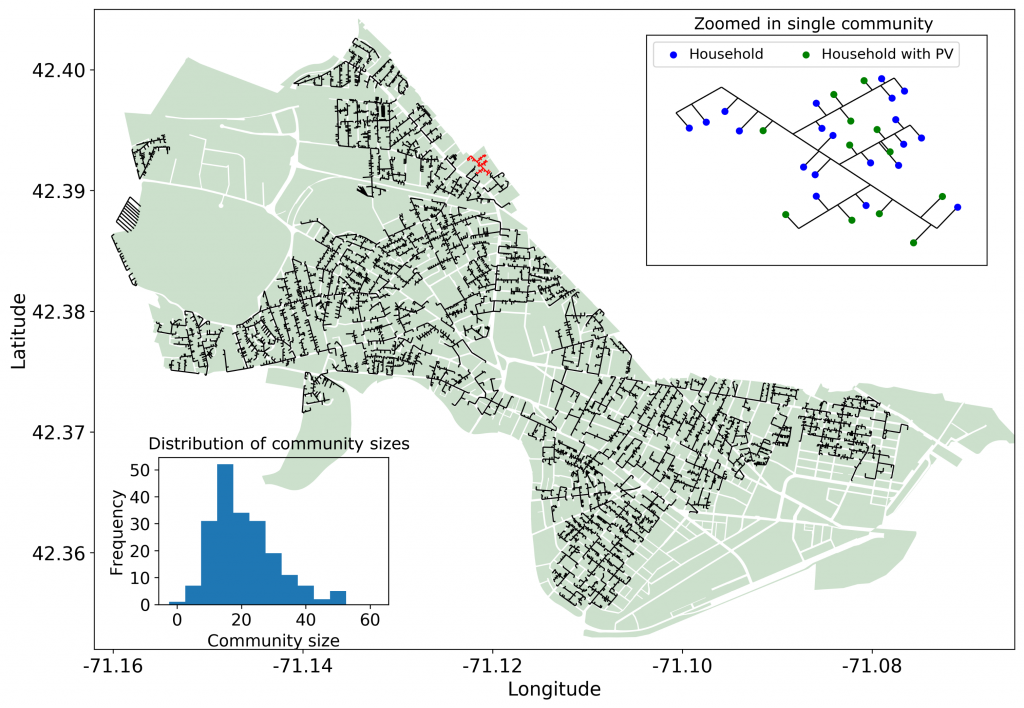Is community energy storage a smart choice for the smart grid
February 22, 2018.
Our paper entitled Community Energy Storage: A smart choice for the smart grid? has recently been accepted in Applied Energy. The paper looks at the economic drivers for energy storage when considered from the perspective of an individual household compared with a community perspective. The main motivation behind the paper was the engineering intuition that a battery in every household does not seem likely to be an optimal solution for the future smart grid, given high battery costs and the rare and expensive nature of the constituent raw materials for battery manufacture. In the paper, we study the economic arguments for both individual households and communities, which illustrated a number of key points as outlined below:
- Most importantly, aggregating household demand profiles reduces the required battery capacity, with each kWh (kilo-Watt hour) of installed storage being significantly more effective at integrating PV generation when deployed at the community level.
- It is possible to realize significant cost benefits at a community level from the economy of scale of both batteries and inverters.
- However, the rate of economic return for individual household batteries is more robust to the changes in the solar resource, despite being less effective for PV integration. This is due to the fact that it doesn't make economic sense for an individual household to purchase a battery which can always store all the surplus generation, rather an economically optimum size is likely to be a size which can be fully utilized most days.
Due to the points above, our work highlights the concern that residential storage may gain a significant market foothold despite community-level batteries being much more effective from both an economic and a costs perspective. Accordingly, it is crucial for energy policy to consider new market mechanisms to encourage community storage projects in areas where they are more economic and environmental.

Forming communities of neighbours by joining households along the road network in Cambridge, MA
Important modelling assumptions
The paper considers a future scenario wherein the electricity price (\$0.35/kWh) is high enough that batteries do provide a return for some users, and we model demand, PV generation and network structure based on empirical data. We also assume a FIT rate which is much lower than current rates (\$0.05/kWh), which is based on average wholesale prices for electricity production. Hence in a regime wherein solar PV is widespread, we may expect PV to be rewarded at near-wholesale price levels.
The location data comes from an electric utility in Cambridge and the raw data cannot be shared, however to model the demand and PV generation data we use the Pecan Street project, which supports free academic access to data. Using the location data, we generate hypothetical communities of households, which are grown outwards along the road network, using a multi-source breadth-first search method based on the Dijkstra shortest path algorithm. This could also be useful for estimating the topology of the real distribution network, however, validation in this regard is difficult as the exact topology is deemed sensitive for security reasons.
For each community, and for each individual household, we find the level of storage that maximizes the Net Present Value (NPV) of the battery system. We simulate approximately 4500 consumption patterns for a month using 484 actual demand patterns in the Pecan Street data. Furthermore, we generalize our results to a high degree by considering many different PV sizes, based on empirical distributions of the sizes that households tend to install.
All the code available for running the simulations is available on github.